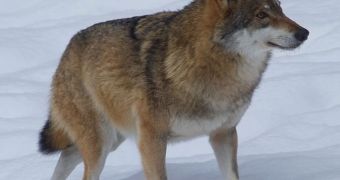Researchers at the Michigan Institute of Technology (Michigan Tech) argue in a new study that exterminating top predators in nature, such as wolves, bears, tigers or lions, can have devastating effects on habitats. The extent of such consequences has not yet been fully gaged, the team adds.
One thing to keep in mind about predators is that they are scarce in nature to begin with. There appears to be a general rule which states that the emergence of too many predators will lead to their demise. This makes sense because each predator requires a large amount of prey to survive.
Therefore, it is normal for prey populations to exceed predator populations by far. Currently, humans are exterminating top predators at an alarming rate, with potentially disastrous consequences for habitats. A clear example of what goes wrong is the large number of elk in Yellowstone National Park.
This population thrived because the gray wolves were exterminated decades ago. A couple of years back, the predators were reintroduced, but they can no longer keep elk under control, and the herbivores are overgrazing the park, destroying trees, and creating other mischief.
This represents solid evidence that removing predators can have far-reaching consequences for habitats. The entire field of ecology – which centers on studying how animals and plants interact with each other and among themselves – is therefore one of the most complex types of sciences out there today.
“We're dealing with the most complicated systems in the universe, and we hardly even know what the moving parts are,” says Michigan Tech research ecologist Rolf Peterson, quoted by the NPR. The expert specializes in studying large carnivores, and is an international authority on wolf-related matters.
He explains that the disappearance of top predators creates what experts refer to as a trophic cascade down the food chain present in a certain habitat. For example, the disappearance of wolves in Yellowstone led to larger elk populations, but also to more plants being eaten, and less birds and butterflies, as well as other insects.
Even landscape features such as river banks can be affected by food chain anomalies. Out-of-control herbivore populations can easily overgraze river banks, leading to fast erosion and a change in landscapes.
“The stream actually changes course. So we're finding that the predator can actually affect the shape of the stream,” explains Oregon State University carnivore biologist, William Ripple.
Peterson argues that organizations such as the global Large Carnivore Initiative should conduct new studies on top predators and their relationships to their environments. This will help authorities decide on new conservation efforts, and will help inform new policies on hunting these important animals.

 14 DAY TRIAL //
14 DAY TRIAL //